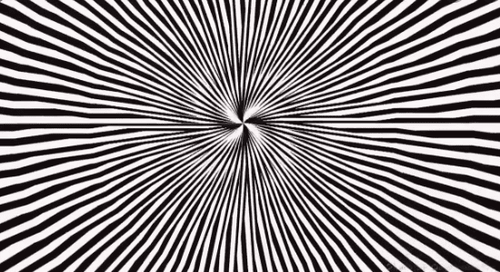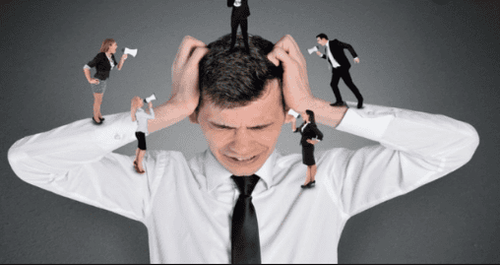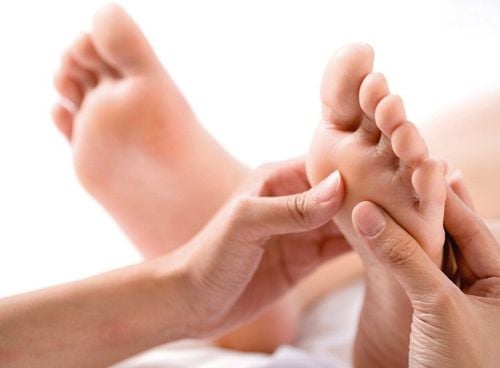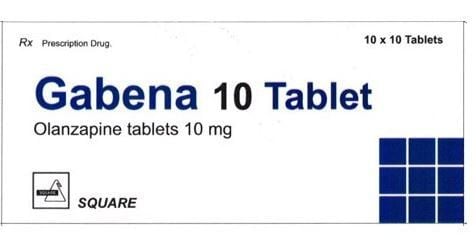This is an automatically translated article.
Human perception is a complex process, going from sensory perception to reason. Perception includes feeling, perception, symbol, thinking, judgment, inference... In which, perception is the reflection of human consciousness with a unified, complete objective object, This is a higher reflection of feeling.
1. What is perceptual disorder?
Perceptual disorder is a disorder in the formation of symbols, components that need to be.
2. Classification of perceptual disorders
2.1. Illusion
Illusion is a false perception of all real things or phenomena outside, for example, delusional patients will see a long dress hanging on the window as a ghost, hear the wind blowing like it someone whispering. Illusions are often classified according to the senses: visual illusions, auditory illusions, taste illusions...
In normal people, delusions can appear under conditions that interfere with cognitive processes. Feelings take place such as: delusions appear in a state where people do not pay enough attention, dim lighting conditions, when voices are not clear, when too tired, too worried, afraid, waiting for a long time ... However, the delusional phenomenon in ordinary people quickly disappears when the conditions that hinder perception are no longer present.
For pathological states, delusions are usually divided into the following categories:
Emotional delusions: this type of delusion occurs in pathological emotional states such as anxiety, fear, and hypermanic states. , depressive state ... Speech illusion: most common in depressive states, depressed patients hear ordinary stories of people around them into warnings, accusations, threats. ... Strange illusions: these are very rich, vivid and strange illusions, appearing outside of the patient's will, independent of emotional changes, for example the patient looks at the dots above wall of ferocious tigers pounced on patients. Strange hallucinations often appear in severe alcohol withdrawal syndrome, delirium, schizophrenia. ..

Ảo tưởng cảm xúc xuất hiện trong trạng thái trầm cảm
2.2 Illusion
Hallucinations are perceptual disorders that make the patient feel as though they are real about an object or phenomenon that does not exist in objective reality. Hallucinations appear and disappear regardless of the patient's will. There are many ways of dividing hallucinations as follows:
Division of hallucinations according to the senses: visual hallucinations, auditory hallucinations (auditory hallucinations), tactile hallucinations, olfactory hallucinations and visceral hallucinations. Segmentation of illusions by texture: rudimentary illusions and complex illusions. Division of hallucinations according to the patient's perception and attitude towards hallucinations: true hallucinations (hallucination) and pseudo-hallucinations (pseudo - hallucination).

Ảo giác thị giác là một dạng ảo giác
3. Types of hallucinogenic disorders
3.1. Real illusion
Auditory hallucinations (also known as acoustic hallucinations)
Rude hallucinations: hearing cicadas, buzzing sounds, gunfire, bells, etc. Clear auditory hallucinations: hearing distinct voices distinguish male or female voices, age, timbre in intensity, familiar or stranger voices... The content of the virtual sound is very diverse, the content can be a threat, foreshadowing a threat. evil, a mockery, a forewarning, a foreshadowing... The phantom voice can be the same voice, it can have many separate voices, call or speak alone, speak in tandem or in tandem. voices about past actions...
Voices can be direct voices to the patient or multiple voices to each other about the patient, can be comments or orders that compel the patient to perform (usually dangerous actions such as jumping off a building, jumping into a car to commit suicide, killing people...). Auditory hallucinations can occur in many different types of mental illness.
Visual hallucinations
Visual hallucinations are a common phenomenon in clinical practice, just after auditory hallucinations and often combined with auditory hallucinations. Visual hallucinations often appear when the patient's perceptual process encounters obstacles such as disturbances of consciousness (delirium...).
Visual illusion content is also very diverse: visual illusion images can be clear or vague, static or dynamic images, images that often change in many forms, can be a single image of an object, a part of the body, possibly a crowd, wild animals, bizarre creatures, the image may be too big or too small...
Patient's attitude to the visual hallucination is possibly intoxicating fascination, fear, dread, or indifference. Visual hallucinations can be encountered in many different psychiatric conditions: acute psychosis, intoxication, alcohol withdrawal, catatonic schizophrenia...

Ảo giác thính giác có thể thấy trong nhiều loại bệnh tâm thần khác nhau
Tactile hallucinations
Tactile illusions are less common than auditory and visual illusions. Tactile virtual content is quite diverse: skin sensations such as burning, stinging, needle-like sensations, crawling insects, abnormal sensations in internal organs... Tactile illusions are common in poisoning or in association. in alcoholism, opiate withdrawal, or in delusional disorder.
Olfactory hallucinations and taste hallucinations
These two types of perceptual disturbances are quite uncommon in clinical practice and often go hand in hand as hallucinations of filthy, foul, and disgusting odors. The disease is common in disorders of brain damage according to different locations (brain tumor, intoxication,...).
Visceral hallucinations
The content of visceral hallucinations is very complex: the patient can feel creatures and foreign objects in the body such as leeches in the ears, snakes in the stomach, frogs in the stomach. ...
It is difficult to distinguish visceral hallucinations (belonging to perceptual disturbances) from somatic disturbances (belonging to sensory disturbances). Somatic dysesthesias are heavy sensations that are not specific, while hallucinations are specific and arise somewhere in the body.
Special Illusion
Sound magic: appear simultaneously with the real sound outside until it stops working. This condition is very easily confused with delusions that appear in the presence of actual stimuli. However, functional hallucinations are opposed to illusions in that the reflection of real objects in the functional hallucinations is not mixed with the symbols of illness that exist side by side with them. Distortion: a false sense of the size and shape of objects in space, often accompanied by altered perception of distance. Hallucinations at bedtime: images arise involuntarily before going to sleep or when eyes are closed and in a dark place, hallucinations of images are varied, strange, bizarre and unlike objects have in reality.

Ảo giác xúc giác thường gặp trong nhiễm độc hoặc trong hội chứng cai rượu
3.2 False illusions
False hallucinations
Pseudo-auditory hallucinations are the most common type of false hallucinations in clinical practice. The content of pseudophagia is very diverse, notably, the patient feels as if his or her thoughts are being heard and revealed. Pseudo-vocal hallucinations are a major part of the autonomic syndrome and are diagnostic criteria for schizophrenia according to the ICD-10F.
Pseudo-motor hallucinations
Patients with pseudo-motor hallucinations see their actions as ready-made, someone borrows their limbs to do a certain action, borrows their mouth to speak continuously routine that the patient himself cannot control.
Other types of false hallucinations
Other types of false hallucinations are rare in clinical mental illness.
Periodic health check-ups help to detect diseases early, so that there are treatment plans for optimal results. Currently, Vinmec International General Hospital has general health checkup packages suitable for each age, gender and individual needs of customers with a reasonable price policy, including:
Health checkup package diamond general health check-up package Vip special health check-up package Comprehensive general health check-up package Standard general health check-up package Patient's examination results will be returned to your home. After receiving the results of the general health examination, if you detect diseases that require intensive examination and treatment, you can use services from other specialties at the Hospital with quality treatment and services. outstanding customer service.
To register for examination and treatment at Vinmec International General Hospital, please book an appointment on the website for service.
Please dial HOTLINE for more information or register for an appointment HERE. Download MyVinmec app to make appointments faster and to manage your bookings easily.













